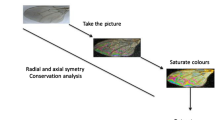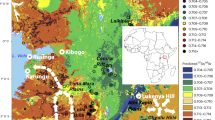Abstract
DR. G. D. H. CARPENTER (NATURE, March 20, p. 46) asks why we should suppose that the occurrence of tsetse-flies (Glossina) in the Miocene of Colorado might have had anything to do with the extinction of some of the large Mammalia. He points out that such flies exist in Africa to-day, carrying trypanosomes, and the native Mammalia nevertheless survive and flourish. It is known, however, that in Miocene times there were extensive migrations of animals, from mammals to insects, and the New and Old Worlds each received important contributions from the other. In such periods of migration it is perfectly conceivable that Glossina might appear in a new region, carrying a trypanosome which would be highly pathogenic for certain elements of the resident fauna. Even in Africa we do not know what animals may be absent to-day owing to the former prevalence of disease-producing organisms.
This is a preview of subscription content, access via your institution
Access options
Subscribe to this journal
Receive 51 print issues and online access
$199.00 per year
only $3.90 per issue
Buy this article
- Purchase on SpringerLink
- Instant access to full article PDF
Prices may be subject to local taxes which are calculated during checkout
Similar content being viewed by others
Author information
Authors and Affiliations
Rights and permissions
About this article
Cite this article
COCKERELL, T. Glossina and the Extinction of Tertiary Mammals. Nature 103, 265 (1919). https://doi.org/10.1038/103265a0
Issue date:
DOI: https://doi.org/10.1038/103265a0



